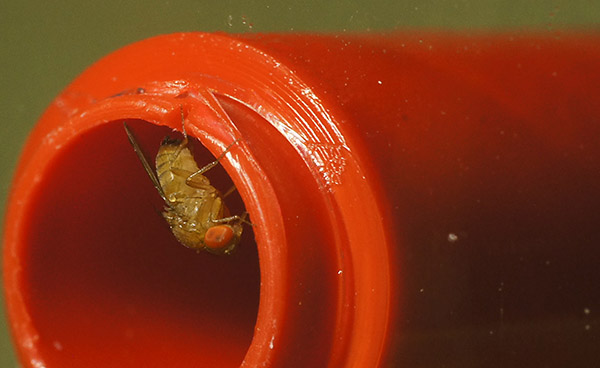Research findings at the University of California, Davis, might help growers apply insecticides to control spotted wing drosophila when the insect is the most vulnerable.
The pest, Drosophila suzukii, infests soft-skinned fruits, including cherries, peaches, grapes, and various berries. It is not controlled by the GF-120 bait commonly used to control cherry fruit fly, so growers have been using traditional insecticides to prevent fruit damage.
Dr. Joanna Chiu, molecular geneticist with the department of entomology and nematology at Davis, said detoxification of insecticides by insects is regulated by the circadian clock—the same internal clock that controls other physiological phenomena such as the sleep-wake cycle. So, she and her colleagues studied the daily cycling of enzymes that could potentially detoxify insecticides to find if there is a time during the circadian day when the insect’s detoxification system is at its weakest. Their idea was that insecticides might be more effective if applied when the spotted wing drosophila’s defenses are low.
Experiments with malathion showed that there is an optimal time to apply the pesticide to inflict maximum damage on the fly. The toxicity of the insecticide varied significantly, depending on the time of day it was applied, and the fly was most susceptible at 6 a.m.
“We hope that growers will be able to use fewer insecticides, thereby decreasing damage to the environment and decreasing costs at the same time,” Chiu said in a press release.
Her colleague Frank Zalom, integrated pest management specialist, said this approach could be particularly relevant for organic insecticides, such as pyrethrum, that are effective for only a short time after they are applied. Pyrethrum is one of few options organic growers have to control the spotted wing drosophila.
The lab experiments were conducted in a temperature and light-dark cycle mimicking raspberry growing conditions in Watsonville, California. Rosanna Kwok, who is also working on the project, said the next steps would be to include more temperature conditions, more insecticides, and to conduct experiments in the field to confirm the lab findings.
“For me, the importance of our research is that it allows us to move toward a more effective and efficient way of controlling this pest,” she said, noting that the fly has spread quickly throughout the western United States since it was first found in California in 2008.
“By recognizing temporal differences that may contribute to a difference in toxicity to certain pesticides, we may be able to move toward management programs that are tailored to target a specific species of insect. We may be able to spray less or less frequently if we can find out when these pests are most susceptible.” •







Leave A Comment